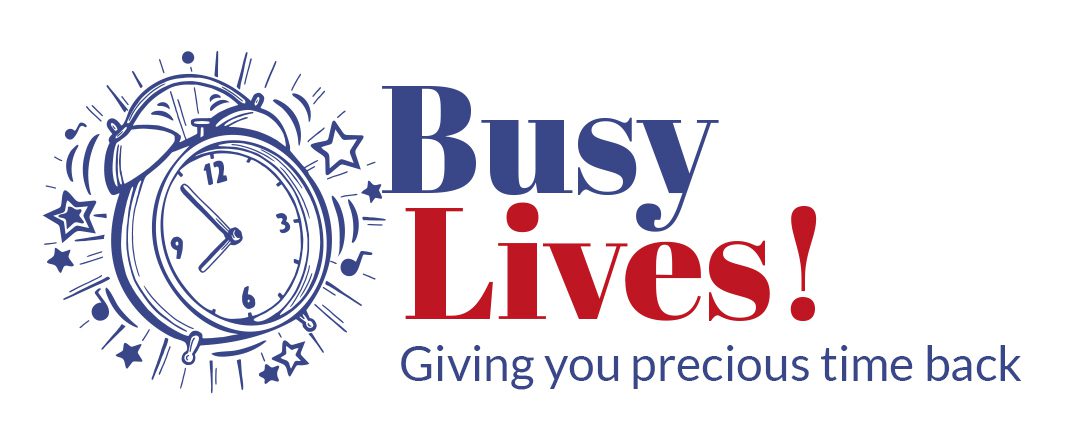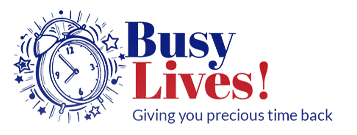
Dec 21, 2020 | BUSINESS SUPPORT, MEETINGS
Spending time preparing for important meetings can really make a difference not only for yourself but the others who attend. An important meeting can potentially make or break your reputation or business. Whether it’s between you and your colleagues or you and a client / customer, every meeting needs to be professional and efficient.
Below are some tips and advice to help you prepare effectively to make sure every meeting goes extra smoothly.
Overview
- Purpose of the meeting
- Pre-reading and research
- Who needs to attend?
- How, when and where the will meeting taking place?
- Style of meeting
- Composing an agenda
- Initiations to the meeting
- How Busy Lives! can support you with this
Purpose of the meeting
Every meeting needs to have a purpose and goal; something you want to achieve by the end. You may find it helpful to write this down. Make sure your goal is specific, add a deadline and make sure it can be measured if relevant – this can be in terms of sales, product output, delegation, impact etc.
Top tip
Don’t have a meeting for the sake of having a meeting! You’d be surprised how many people make this mistake. ‘I always have a meeting on a Wednesday, so we’re having one!’ Colleagues will quickly become disengaged and switch off if there is no real purpose behind a meeting and using up their valuable time.
Pre- reading & research
Read all the associated paperwork for the meeting, making notes or highlighting against items you may wish to raise or comment upon.
It will very quickly come apparent who has or has not prepared for what is to be discussed. Don’t be that person.
If an agenda item being tabled or discussed isn’t something you don’t have first-hand experience of and will be required to decide upon, research additional information or look at evidence gathered towards it. This is invaluable if there is conflicting views in the meeting for you to be able to provide an insight. It will also help you in achieving the goal you want.
Who needs to attend?
When you set up a meeting everyone who attends should have a role to play or be relevant to what they do. Are the necessary? Decide if each person has a purpose, if you cannot find one, it is time to decide if they really need to attend. It may be better use of their time to either let them have access to the minutes or a short verbal summary of specific parts of the meeting afterwards which were relevant to them.
How, when and where is the meeting will take place?
Once you have decided on how many people are participating, you can decide when and where you are going to hold the meeting; that could mean deciding whether you are going to hold the meeting in person or online. If you are choosing to hold the meeting in person think about the best location for this. You may need to book a room or meeting space, this may dictate the time and place you can hold your meeting if not on your premises. Online meetings have more flexibility, but you should still ensure your participants have enough notice to ensure they are available at the appointed time.
3 Top tips
- Make sure the room is the right size for the number of people attending.
- Think what resources you may need access to such as a flip chart or projector if a presentation is going to be made for instance.
- The layout of the room will influence and make a difference. It needs to be factored into suit the style of your meeting. Think carefully how chairs and tables are set out. For instance, formal, relaxed discussion, presentation, debate, a difficult conversation or recruitment all need different layouts.
Composing an agenda
Now you know when and where your meeting is taking place it’s time to make an agenda. You will already know what the meeting is about. Carefully composing an agenda is the time to carefully allocate your use of meeting time for maximum effectiveness. Having a well-planned agenda means your meeting will flow and stay on track which not only makes your meeting achieve its goal but will also display your professionalism and ability to deliver on-time.
An agenda should typically fit on one side of A4 paper.
Essential information to go on the agenda
- Date
- Time
- Location
- People Attending
- Chair
- Minute taker / attendees taking their own notes
- Bulleted agenda items – If different people are presenting different items off the agenda, have their initials next to the specific bulleted item
- AOB (Any other business) – Think carefully if you want to allow this or not.
Other information you may wish to include after the agenda items at the bottom of the page:
- List of papers and documents that will be used or referred to during the meeting.
- Business priorities for the period.
- Vision statement or business strapline.
The agenda should be sent out at least two weeks in advance of the meeting. This allows attendees with different schedules and commitments prepare at a time that suits them.
Invitations to the meeting
Now you have a list of participants and a meeting place set up you need to send out invites. Reinforce the purpose, date, place and timings in the body of the invite you send. Ensure to send any related paperwork, documents or previous minutes that will be referenced or used alongside the agenda.
After sending out your invites keep a note of who is and isn’t attending. If key people cannot attend it may be worth considering rescheduling to a time when everyone can attend. If only one or two people cannot attend decide if the meeting should go on ahead on that date – if you do decide to carry on make a note who cannot attend and send them any minutes paperwork they may need in order to remain informed.
Last Top Tip
Print off the agenda and all papers in advance of your meeting. If there are a number of papers being discussed from the agenda it’s worth spending the time ordering the papers to coincide in the same order as the agenda item. I then label each document in the top right-hand corner with the Agenda item number on. This helps you quickly reference the exact paper you need within the meeting and again demonstrates to others you’re professionally prepared and organised.
This can also be achieved electronically. Create a folder with the agenda all the documents for the meeting in. When you save each document into the folder save the file name commencing with the agenda item number followed by the title. This will help you quickly access what you need to open as the meeting progresses.
How Busy Lives! can support you with this
Busy Lives! was created when I left a busy career that left me time poor and not able to give sufficient priority to what really mattered to me. I now provide a wide range of business support for people in that position.
I am happy to help by:
Let you help you gain precious time back. Ring Busy Lives! 07565 722 031
Drop me a message on LinkedIn / Messenger on Facebook
Or Email: karen@busylivesnottingham.co.uk


Feb 21, 2020 | MEETINGS
It is often a common misconception that anyone can effectively minute take! You’d be surprised how different four or five sets of minutes from the same meeting can vary. I used to have minute taking as one of the tasks when I recruited for my Clerical team in my previous career. This blog post breaks down the key elements needed to minute take effectively and completes the set of three posts surrounding the focus on meetings.
Overview
- Why are accurate minutes important?
- How to take effective minutes
- Preparation
- During the meeting
- After the meeting
- How Busy Lives can help
Why are accurate minutes important?
The minutes taken at a meeting serve as a record of the meeting. They detail what happened at a meeting including who attended the meeting, what important points were made, any goals, action plans or due dates set as well as anything else of importance.
Meeting minutes are useful documents as they document key ideas brought up at meetings as well as the discussions that preceded and followed the them.
Generally, minutes taken in a business setting do not need to record everything word-for-word, that kind of minute taking is for legal or specific HR meetings and known as transcription or transcribing. In a business setting it is okay to condense some discussions and leave out irrelevant ones.
Additionally, having a record of the meeting means that anyone who was not in attendance will remain informed.
How to take effective minutes:
Preparation:
The first thing to do is decide who is going to take the minutes. I feel it is key is to get someone outside of the organisation or one of your clerical team to take minutes as they will be impartial. Having someone else to take minutes means every participant can fully engage with the meeting and make their contributions.
When choosing your minute taker, it is important for them to have a good ear and the ability to stay focused and record details accurately, this means they must be a good multi-tasker.
Once the minute taker has been selected, they need to ensure they are aware of any company formats / styles and ensure they can comply with these. They should also get a copy of the meeting agenda, names of all the attendees and relevant papers which will be referenced to.
Some people find it useful to make a template for the meeting. I always use one. This can be as simple as the agenda items within a table to listed on a piece of paper with space under each item for them to write notes.
During the meeting
During the meeting, the minute taker needs to record important information.
This includes:
- The date and location of the meeting.
- Time the meeting started.
- Who attended and who did not attend sending apologies.
- Any corrections to the previous meeting’s minutes as a matter of accuracy.
- Any changes to the agenda or its order.
- Key points made throughout the meeting and who by.
- The results of any votes.
- Any goals / action points agreed, who by and their due dates.
- The time and date of the next meeting.
- The time the meeting ended.
When writing the minutes, unless it is a legal proceeding, the minute taker can summarise any arguments or discussions. They must record discussions objectively and not include any personal observations.
The minutes should be numbered to align with the agenda items. During the meeting it may be easier to make summary notes rather than full sentences depending upon your speed. Later, the minute taker can then expand on their notes and make coherent paragraphs. While quick notes are easier to take it is important to have all the important information accurately recorded.
Top tips if you are new to minute taking:
- Ask for permission to record the meeting. Be sure to let the participants know if this is planned. Once the recording is made do not try to make a word-for-word transcript simply use it for reference when summarising notes.
- Don’t be afraid to ask for clarification – if the meeting attendees move topics without deciding an outcome on the previous topic, be sure to ask them for a decision or plan of action if needed.
- Always ensure your completed minutes are ‘sharp’ with their presentation and have a high standard of professionalism.
Top tips:
- Arrive in advance and in good time before the meeting commences so you can get set up and be informed of any pertinent information you need to know.
- Check with the Chair before the meeting commences if they would like names / initials against important points that are made or not.
- If you are minute taking where you don’t know the members present draw a quick shape of the table and as people introduce themselves write their names down corresponding with where they are sitting. When they then speak within the meeting you will be accurately be able to record the initials of who said what.
- Use a handout reference code where circulated papers are discussed within the agenda. Members will all know which exact papers were drawn upon and discussed at a later date.
- If possible position yourself next to the Chair at the meeting. You may not be actually contributing but are still playing a key role at the meeting. It also helps if you subtly need to prompt the Chair if they miss an agenda item for instance.
After the meeting
Once the meeting is over, the minute taker should take their notes and make them into an articulate document. Make sure the minutes are clear and reflect the meeting and each section is numbered to align to the appropriate agenda item. It is a good idea to do this as soon as possible after the meeting ends.
Make sure all decisions and further actions are clearly recorded and everything is written with enough detail to be understood. If other documents need to be referred to include them in either as an attachment, appendix or state where the documents can be found.
Once the minutes have been finished double check all spellings and grammar. Send the minutes to the Chair primarily to approve and be signed off before you distribute them to all names parties.
The next meeting will review the minutes and amendments may be required. If this is so, change the minutes as needed then present them for filing with a version number clearly depicted in the heading.
Top Tip:
If possible edit and produce your final set of minutes within 24 – 48 hours of the meeting taking place if possible. This will make a difference as the content will still be fresh in your head.
How Busy Lives! can support you with this
Busy Lives! was created when I left a busy career that left me time poor and not able to give sufficient priority to what really mattered to me. I now provide a wide range of business support for people in that position.
I am happy to help by:
- Helping you prepare for an important meeting.
- Composition and circulation of any agenda and related documentation before your meeting.
- Chairing your meeting so that you can concentrate on also contributing within the meeting.
- Minute taking during the meeting so that you can concentrate on achieving your goal.
Let you help you gain precious time back. Ring Busy Lives! 07565 722 031
Drop me a message on LinkedIn / Messenger on Facebook
Or Email: karen@busylivesnottingham.co.uk


Jan 15, 2020 | BLOG, MEETINGS
When meetings run smoothly, stay on track with the agenda and finish on time they make effective Chairing of a meeting look like a simple task. This is not always the caseand can take great skill to achieve this, especially if the attendees in the meeting are not familiar with each other or have varying personality traits. This blog post shares some of my experiences and skills in how to effectively Chair, lead and hold a meeting.
Overview
- The Chairperson
- What makes a meeting ineffective?
- How to effectively Chair a meeting:
- Preparation
- During the meeting
- Ending the meeting
- After the meeting
- How Busy Lives can help
The Chairperson
A Chairperson is the leader of a meeting. Their role is to ensure the meeting runs smoothly and its goal is met. As the leader all participants should address their comments and concerns to the chairperson, and they should ensure all disagreements are resolved. One of the key responsibilities of the Chair is to ensure that the agenda is covered and that the meeting doesn’t swerve off into a different direction. Additionally, the chairperson should ensure all participants contribute to the meeting and no one dominates the meeting.
The Chairperson should also end the meeting by arranging a date for the next meeting.
What makes a meeting ineffective?
Every meeting should achieve something. If your meeting does not have a goal, then it is unnecessary. When you hold an unnecessary meeting, you may find people become bored and valuable time is wasted.
Another thing which can make a meeting ineffective is if the Chairperson over exerts their authority. If the Chairperson stops people from giving opinions and refuses to listen to others, then the meeting will not end with a unified decision and may be met with resistance.
On the flip side of this if the Chairperson does not exert enough control then the meeting may spiral out of control and you may find a couple of people dominate the proceedings or the agenda isn’t covered.
Having too many people in a meeting can also reduce its effectiveness as valuable opinions and comments may be lost in the sea of voices.
So, how can you avoid these pitfalls?
How to effectively chair a meeting
Preparation
Preparation is key. Making sure you are prepared for your meeting will not only give you a professional image but will also ensure your meeting runs smoothly.
See my blog ‘Preparing for Important Meetings’ to ensure you are fully prepared. But in brief terms, to ensure you are prepared make sure you:
- An objective / goal clearly defined.
- Have reserved a time and place for you meeting with invitations, related paperwork and an agenda sent out at least two weeks ahead of time.
- Have read or researched thoroughly all the information which is going to be discussed.
Before the meeting is due to start familiarise yourself with the participants. Identify their strengths and weaknesses. Doing this means you can call on particular people for their insight in certain discussions but also be sensitive to their weaknesses and know when they will want to take a backseat in discussions.
Top tip
- Don’t try to both Chair and be the minute / note taker at any meeting you lead. To effectively Chair you need to be concentrating fully on the agenda, discussions and the people around the table. If possible always have a minute taker.
During the meeting
As the Chair of the meeting it is your responsibility to move the meeting through the agenda and draw conclusions from discussions and set appropriate actions assigning specific people to each action.
It is a good idea to open any meeting with the setting of ground rules and any introductions of they are required.
Ones which I commonly use are:
- Please don’t speak or have your own conversation whilst someone else is addressing the meeting.
- Please ensure your mobile phones are either switched off or on silent mode.
- Make it clear if questions will be taken during or at the end of an agenda item.
- Make it clear that you would like everyone to contribute throughout the meeting and that your opinion and thoughts maybe called upon to share.
- Please don’t interrupt someone who is already talking to the group.
If relevant give everybody the opportunity to introduce themselves and what they do.
Throughout the duration of the meeting you, as the chair, should actively listen to every participant of the meeting and encourage every person to contribute with every discussion.
Top Tips
- If you are not familiar with everyone at the meeting have a piece of paper in front of you and quickly draw the table shape and jot down the names as people introduce themselves.
- A method I commonly use which works well if there are some strong personalities at the meeting, is to inform the group that I will invite each person in turn to share their opinion to a question raised when relevant. The easiest way to ensure you don’t miss someone out is to rotate from where you are sat in either a clockwise or anti-clockwise direction.
It is also vital for the Chairperson to remain neutral in all discussions and ensure any arguments reach amicable solutions. It is also important for the Chair to ensure everyone is involved in the meeting and no one is overshadowed.
The Chair should also not use their position to dominate the meeting or impose their own views.
As the Chair you also need to ensure the meeting runs on time and follows the agenda.
Ending the meeting
End the meeting by:
- Summarising the key points achieved and agreed upon.
- Any items raised which will now become agenda items at a future meeting.
- Reinforce any actions / tasks with the specific people who are following through on these and by when.
- Set the next meeting date and time if required.
- Thank the participants for attending and their contributions.
- State that the meeting has now formally ended.
After the meeting
After the meeting is over ensure you follow up with any relevant materials – for example sending out copies of any minutes / notes taken during the meeting.
Also, ensure that any tasks you set during the meeting are followed through with individuals – this could be done via email or in person. Doing this can ensure there is no confusion over who is doing what and all tasks are done in good time.
How Busy Lives! can support you with this
Busy Lives! was created when I left a busy career that left me time poor and not able to give sufficient priority to what really mattered to me. I now provide a wide range of business support for people in that position.
I am happy to help by:
- Helping you prepare for an important meeting.
- Composition and circulation of any agenda and related documentation before your meeting.
- Chairing your meeting so that you can concentrate on also contributing within the meeting.
- Minute taking during the meeting so that you can concentrate on achieving your goal.
Let you help you gain precious time back. Ring Busy Lives! 07565 722 031
Drop me a message on LinkedIn / Messenger on Facebook
Or Email: karen@busylivesnottingham.co.uk






